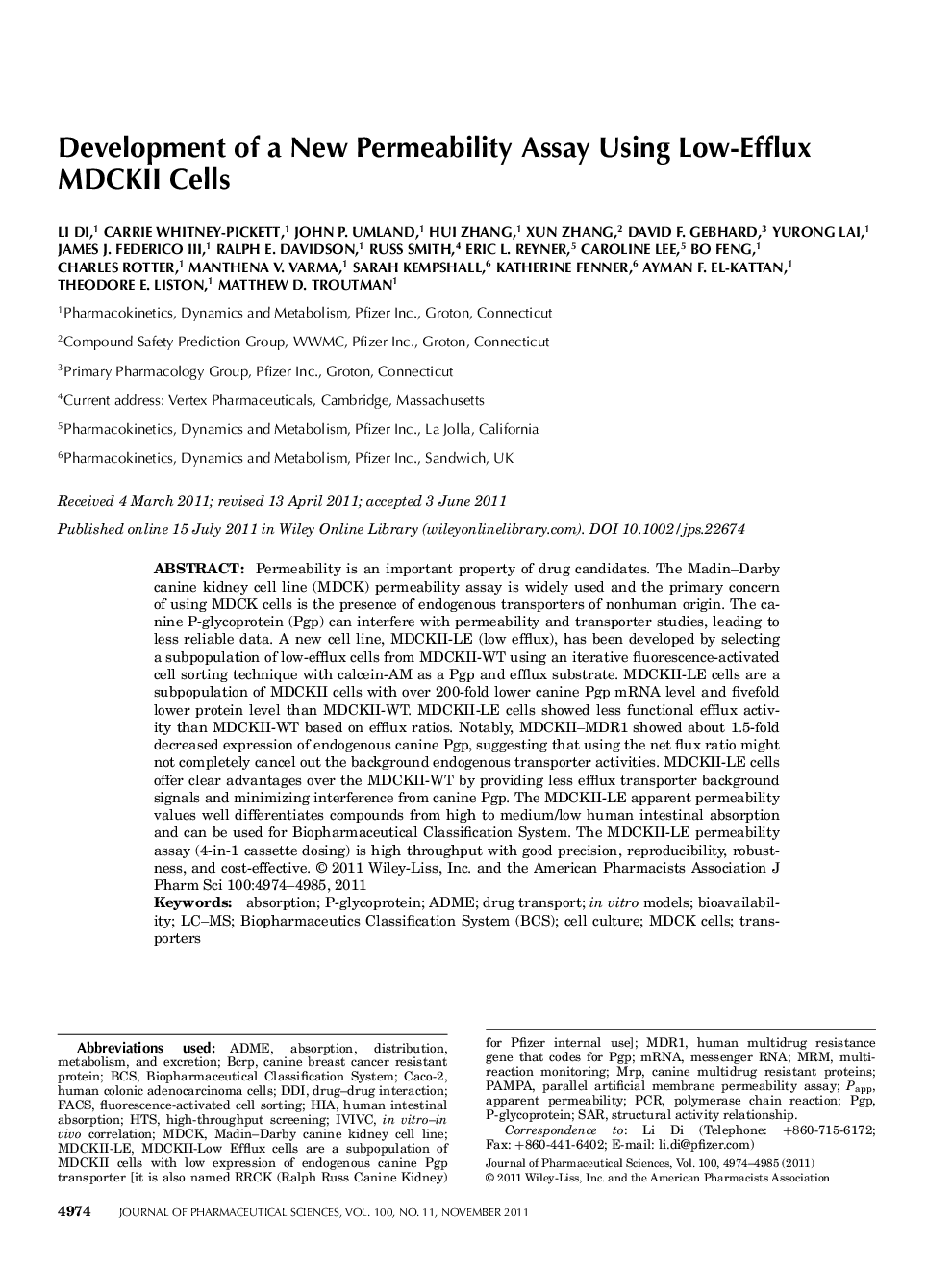| Article ID | Journal | Published Year | Pages | File Type |
|---|---|---|---|---|
| 2486196 | Journal of Pharmaceutical Sciences | 2011 | 12 Pages |
Abstract
Permeability is an important property of drug candidates. The Madin-Darby canine kidney cell line (MDCK) permeability assay is widely used and the primary concern of using MDCK cells is the presence of endogenous transporters of nonhuman origin. The canine Pâglycoprotein (Pgp) can interfere with permeability and transporter studies, leading to less reliable data. A new cell line, MDCKIIâLE (low efflux), has been developed by selecting a subpopulation of lowâefflux cells from MDCKIIâWT using an iterative fluorescenceâactivated cell sorting technique with calceinâAM as a Pgp and efflux substrate. MDCKIIâLE cells are a subpopulation of MDCKII cells with over 200âfold lower canine Pgp mRNA level and fivefold lower protein level than MDCKIIâWT. MDCKIIâLE cells showed less functional efflux activity than MDCKIIâWT based on efflux ratios. Notably, MDCKII-MDR1 showed about 1.5âfold decreased expression of endogenous canine Pgp, suggesting that using the net flux ratio might not completely cancel out the background endogenous transporter activities. MDCKIIâLE cells offer clear advantages over the MDCKIIâWT by providing less efflux transporter background signals and minimizing interference from canine Pgp. The MDCKIIâLE apparent permeability values well differentiates compounds from high to medium/low human intestinal absorption and can be used for Biopharmaceutical Classification System. The MDCKIIâLE permeability assay (4âinâ1 cassette dosing) is high throughput with good precision, reproducibility, robustness, and costâeffective. © 2011 WileyâLiss, Inc. and the American Pharmacists Association J Pharm Sci 100:4974-4985, 2011
Keywords
Related Topics
Health Sciences
Pharmacology, Toxicology and Pharmaceutical Science
Drug Discovery
Authors
Li Di, Carrie WhitneyâPickett, John P. Umland, Hui Zhang, Xun Zhang, David F. Gebhard, Yurong Lai, James J. III, Ralph E. Davidson, Russ Smith, Eric L. Reyner, Caroline Lee, Bo Feng, Charles Rotter, Manthena V. Varma, Sarah Kempshall, Katherine Fenner,
